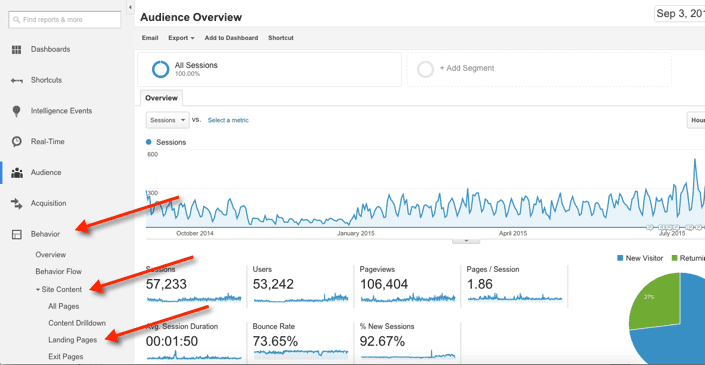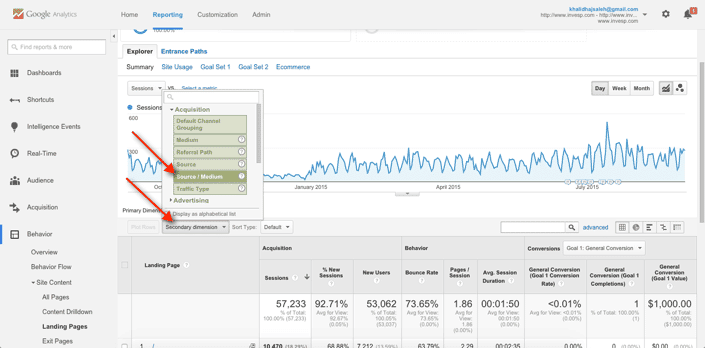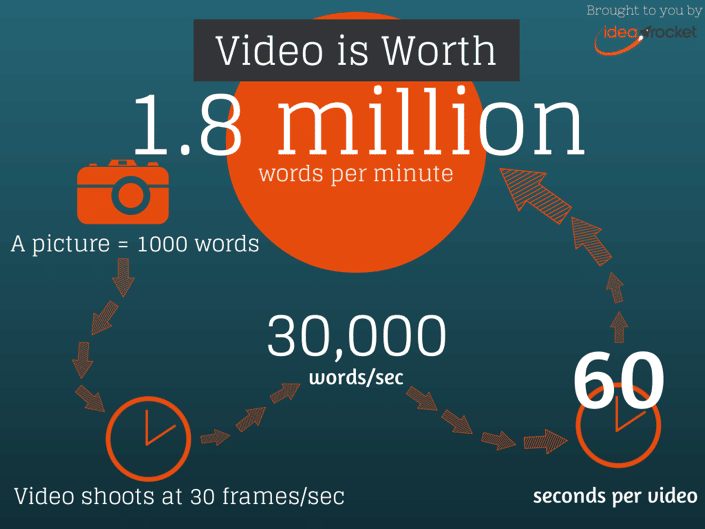Converting a blog visitor to a subscriber is a rewarding experience. It sends you as a blogger a signal that you are on the right track. But how do you increase your blog subscriptions? In this post, I will share with you 14 conversion optimization tactics that you can use to increase your blog subscriptions.
1. Create a compelling value proposition
With tens of millions of blogs out there, how do you stand out from the competition? Why would someone choose to subscribe to your blog, share your content, refer his friends and colleagues to it? There are many tactics you can use to increase your blog conversion rate. But if you are looking for a long term strategy to increase blog conversions, you must start with defining a compelling value proposition. So, how do you determine your value proposition? You analyze your areas of strength, your expertise, what is unique that blog subscribers cannot find anywhere else. It might in the type of content you publish, the topics, or the frequency, or any other factors that are truly unique to your blog.
As you come with different value proposition statements, evaluate each of them in terms of:
- the value it provides to your readers and
- it is exclusivity
Ask yourself: can any of other blogs in your space make the same value proposition claim?
2. Create personas for your blog
Who are you targeting with your blog? Are you going after three or more different segments? As a good rule of thumb, you should create different personas for each of the reader segments you are after. How does this help you increase conversions? When you create personas for your blog, you start using these personas in every aspect of your blog whether it is the type of content you are writing, the language you use or the promotions for your blog.
Let’s say you run travel blog. Some of its content is geared towards the well established travelers, those who afford to spend few weeks every year traveling. The typical profile for the blog readers was a male age 55 or older, making more than $200,000 a year.
That is too vague.
However, if you create a persona: Greg Jones, a 58 years old gentleman who owns three restaurants in Chicago. Greg spends 3 weeks travelling to different countries with the goal of relaxing as well as well as looking for new recipes for his restaurant. Greg is a translation of that vague target market into a person you can think of as you are writing a blog post.
3. Look at your competitors
Performing a SWOT analysis of other blogs in your space can help you increase conversions. Start by looking at the top 5 to 10 blogs in your space. For each of these blogs,
- What are their strengths?
- What are their weaknesses?
- What are the things they do well in terms of design or content which you can learn from?
- What are the areas which these blogs are not providing to readers? Can you fill that gap?
This competitive analysis will provide with you specific items you can work on to improve the quality of your blog.
4. Maintain continuity
Visitors will not subscribe to your blog unless they trust that you will provide them with value. Maintaining continuity in your blog design will ensure that keep that visitor trust. What does that mean? You maintain continuity in a blog in one of two ways:
- Continuity in messaging: it is not enough to come up with a value proposition, every little detail on your blog must convey that value proposition. Do you convey your value proposition in the topics you write about and in your style of writing?
- Continuity in design: If your navigation is on the right hand side on the homepage of the blog, do not move it to the left hand side in the post pages. If you use a particular color scheme in your blog, then use the same color scheme for your email list.
5. Use social proof
Visitors feel more comfortable when they see that the blog they subscribing to you has 5,000 more subscribers. Social proof helps increase conversions in two ways: 1. It validates their decision to subscribe, 2, and it makes them feel they might be missing on something which others found value in.
What type of social proof can you use?
- The number of RSS or email subscribers
- Interviews by media outlets (news, tv, etc)
- Publish articles in newspapers
- Publish books
- Speaking at industry events and conferences
- Being followed by experts in your field
6. Get personal
By their nature, blogs are personal. Visitors like to know more about the person behind the blog. Successful bloggers develop a following (a cult) that enjoys and shares what they write. Pay close attention to your “about us” page. Add a nice image for yourself, and use a personal touch in your different posts.
7. Engage your visitors with regular fresh content
Every blog has old content that stood the test of time. But visitors expect to see regular fresh content published regularly on the blog. They want to hear from you. Merely increasing your publishing schedule to move than 3 times a week will increase the number of visitors to your blog and the number of subscribers. How do you that? There are three steps you should follow:
- Create a list of topics that you want to write about. We typically have an annual editorial calendar with 150 topics in it. You might want to start smaller but having an editorial calendar is important.
- Select publishing days: We avoid publishing posts on Fridays or the weekend, other days are good.
- Evaluate how much you are sticking to your editorial calendar regularly.
8. Engage your visitors with good images and videos
A good image is worth a thousand words. When we first started blogging almost 10 years ago, adding a stock-image did the job. Nowadays, you have to do more. Use a service like canva that allows you to customize stock images to give you the edge you are looking for.
9. Ask visitors to subscribe and to share
Don’t expect that people will subscribe if you do not ask them to do so. So, make sure that your subscription boxes are clear, nicely designed and well placed. Consider using an exit intent popup to capture emails of visitors as they are leaving your website.
10. Use Incentives to persuade visitors to subscribe
Do you have an ebook, a whitepaper or a template to offer to your visitors? These are all excellent incentives to persuade visitors to join your email list.
11. Use the right offer with the right content
For most blogs, 20% of your blog pages drive 80% of the visitors. So, these pages deserver special attention from you. These top pages should have a special offer for visitors. How do you do that? Follow these 4 steps:
1. Use your analytics program to determine the top landing pages on the website. You can do this in google analytics by looking the landing page report under Behavior > Site Content > Landing pages.

2. Add source/medium secondary dimension to view what is driving traffic to these pages 
3. Evaluate the content of the different sources that driving traffic to your website. If most of the visitors are coming to your website through organic traffic, then what keywords are visitors using to land on these posts? If visitors are coming to your website through a referral, what is that context?
4. Create a special offer to match context that is driving visitors to the page.
Let’s say you notice that visitors are searching in Google for the term “creating widgets” and that is how they land on particular post your blog. This post will be an excellent place to have a nicely designed banner at the bottom of the post which offers visitors a chance to download an ebook titled “how to create widgets.”
12. Address visitor doubts
Visitors do not subscribe to a blog email list because one of two reasons:
1. because they are afraid of getting spammed: Assuring visitors that you will not spam them and that you will not share they private information is simple. Add these assurances next to your email subscription box and make sure not spam!
2. Visitors already receive too much email: The fact that people receive too much email is the more challenging problem to address.
Here are few things you can think about:
- Let visitors know about the frequency and the type of material you will be sharing.
- Consider reducing the number of times you send the email to your list. Anything more than once a week might be an overkill. Consider if it makes sense to send bi-weekly or monthly email updates to your blog email list.
- Experiment with different parts of the email such as sender name, subject, email copy, email design, day and time of sending the emails.
13. Update old posts
Old posts will drive a good percentage of your organic traffic. But some of these posts might require updates to keep them up with the latest information. At Invesp, some of the posts we published back in 2008 still drive monthly visitors to our blog. You should not update all of your old posts. Instead evaluate old posts based on visitor volume and by social interaction (social shares). The top 10 or 20 posts are the ones that should be updated. Make sure to check out this post on writing great blog content.
14. Start AB testing
Don’t just start making changes to your blog. Instead do it in a structured way. As you come up with a new design or copy ideas, use an AB testing tool to split the visitors between the old design and the new design. The testing process will help you understand if your new design increased conversions, lowered conversions or had no impact on conversions. By the way, get yourself a free AB testing account with world class support by clicking here.
Photo credit: http://idearocketanimation.com/4293-video-worth-1-million-words/




